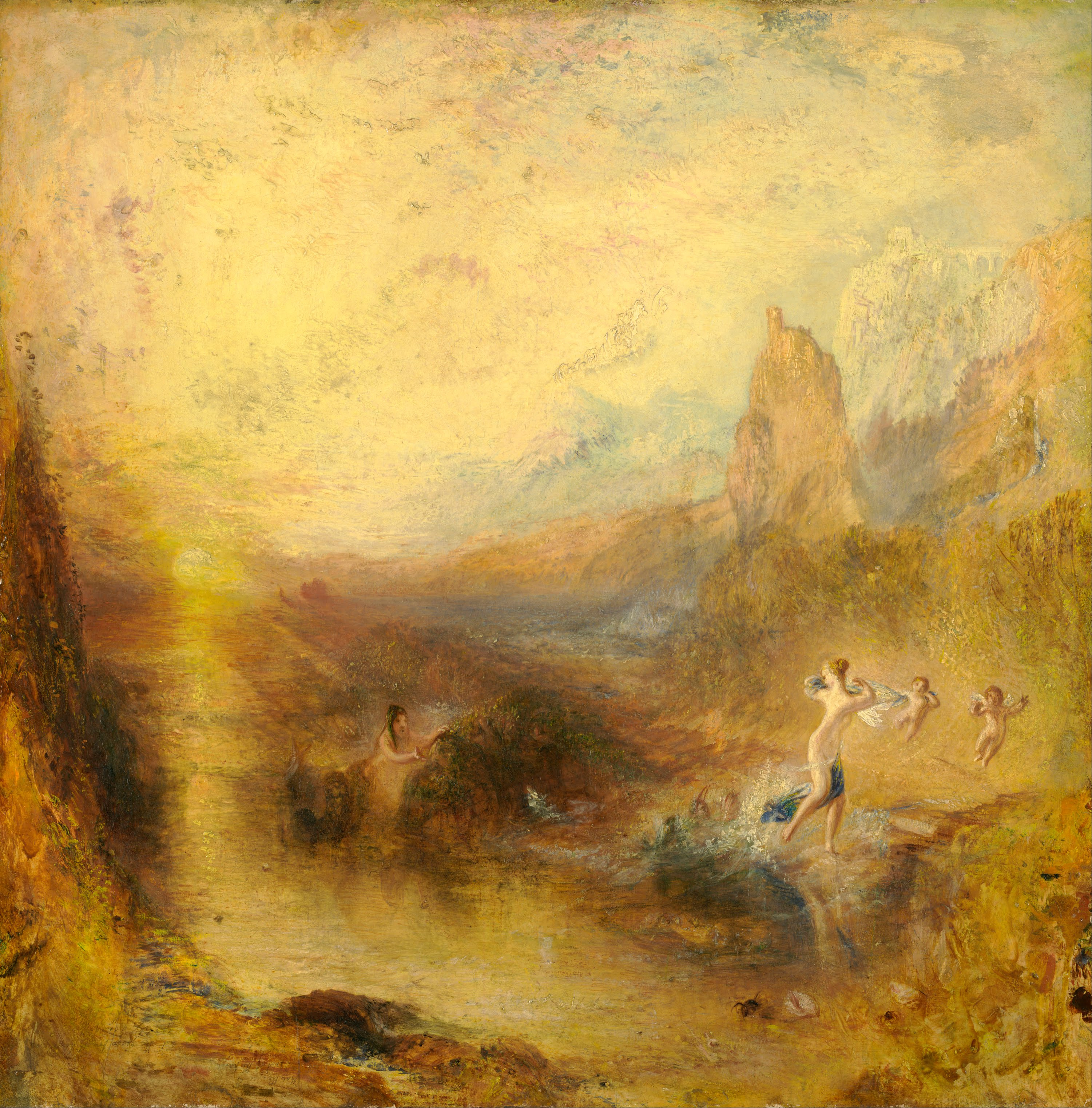Joseph Mallord William Turner was baptized on 14 May 1775, but his date of birth is unknown. It is generally believed he was born between late April and early May. Turner himself claimed he was born on 23 April, but there is no proof. As today is April 23rd, let's celebrate with this beautiful but sad story. J. M. W. Turner dominated British landscape painting throughout the first half of the nineteenth century, when landscape gained widespread recognition as a major category of modern art. Emulating his idol, the seventeenth-century French historical landscape painter Claude Lorrain, Turner sought to go beyond mere observations of nature by including momentous events from the past within his landscapes as moral lessons. But during Turner’s lifetime and ever since, his paintings have been most admired for his virtuoso renditions of natural appearances, especially dramatic light effects. The way Turner represents the flood of sunlight in Glaucus and Scylla, for example, heralds not only the bold brushwork developed by the French Impressionists later in the century, but also the veils of nonrepresentational color in Abstract Expressionist painting.
The painting addresses an episode from Ovid’s Metamorphoses in which the sea god Glaucus hopes for the favor of the beautiful ocean nymph Scylla. Turner depicts her fleeing from the outstretched arms of her would-be lover, whose hopes have been dashed by the jealous and vengeful Circe, daughter of the Sun, who loves Glaucus. To frighten Scylla away from him, Circe has turned Glaucus into a sea monster. Circe will later transform Scylla into a rock, and Turner probably alludes to this with the two red outcroppings aglow on the distant horizon.

